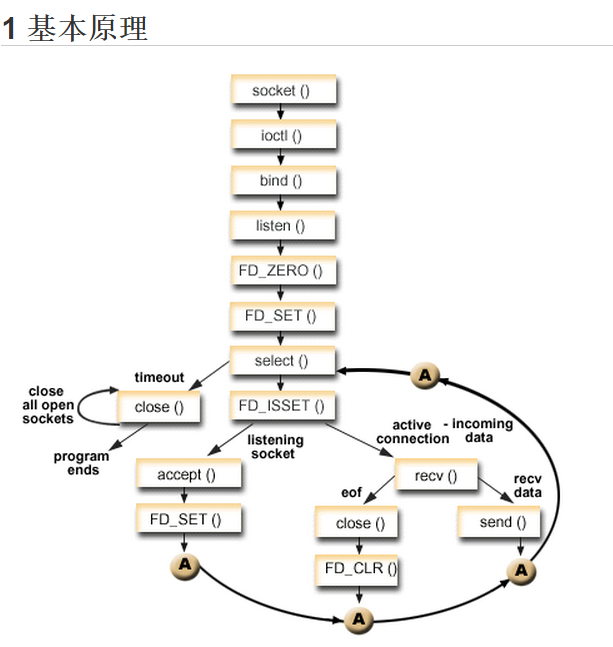1
2
3
4
5
6
7
8
9
10
11
12
13
14
15
16
17
18
19
20
21
22
23
24
25
26
27
28
29
30
31
32
33
34
35
36
37
38
39
40
41
42
43
44
45
46
47
48
49
50
51
52
53
54
55
56
57
58
59
60
61
62
63
64
65
66
67
68
69
70
71
72
73
74
75
76
77
78
79
80
81
82
83
84
85
86
87
88
89
90
91
92
93
94
95
96
97
98
99
100
101
102
103
104
105
106
107
108
109
110
111
112
113
114
115
116
117
118
119
120
121
122
123
124
125
126
127
128
129
130
131
132
133
134
135
136
137
138
139
140
141
142
143
144
145
146
147
148
149
150
151
152
153
154
155
156
157
158
159
160
161
162
163
164
165
166
167
168
169
170
171
172
173
174
175
176
177
178
179
180
181
182
183
184
185
186
187
188
189
190
191
192
193
194
195
196
197
198
199
200
201
202
203
204
205
206
207
208
209
210
211
212
213
214
215
216
217
218
219
220
221
222
223
224
225
226
227
| #include <stdio.h>
#include <stdlib.h>
#include <string.h>
#include <errno.h>
#include <netinet/in.h>
#include <sys/socket.h>
#include <sys/select.h>
#include <sys/types.h>
#include <netinet/in.h>
#include <arpa/inet.h>
#include <unistd.h>
#include <assert.h>
#define IPADDR "127.0.0.1"
#define PORT 8787
#define MAXLINE 1024
#define LISTENQ 5
#define SIZE 10
typedef struct server_context_st
{
int cli_cnt;
int clifds[SIZE];
fd_set allfds;
int maxfd;
} server_context_st;
static server_context_st *s_srv_ctx = NULL;
static int create_server_proc(const char* ip,int port)
{
int fd;
struct sockaddr_in servaddr;
fd = socket(AF_INET, SOCK_STREAM,0);
if (fd == -1) {
fprintf(stderr, "create socket fail,erron:%d,reason:%s\n",
errno, strerror(errno));
return -1;
}
int reuse = 1;
if (setsockopt(fd, SOL_SOCKET, SO_REUSEADDR, &reuse, sizeof(reuse)) == -1) {
return -1;
}
bzero(&servaddr,sizeof(servaddr));
servaddr.sin_family = AF_INET;
inet_pton(AF_INET,ip,&servaddr.sin_addr);
servaddr.sin_port = htons(port);
if (bind(fd,(struct sockaddr*)&servaddr,sizeof(servaddr)) == -1) {
perror("bind error: ");
return -1;
}
listen(fd,LISTENQ);
return fd;
}
static int accept_client_proc(int srvfd)
{
struct sockaddr_in cliaddr;
socklen_t cliaddrlen;
cliaddrlen = sizeof(cliaddr);
int clifd = -1;
printf("accpet clint proc is called.\n");
ACCEPT:
clifd = accept(srvfd,(struct sockaddr*)&cliaddr,&cliaddrlen);
if (clifd == -1) {
if (errno == EINTR) {
goto ACCEPT;
} else {
fprintf(stderr, "accept fail,error:%s\n", strerror(errno));
return -1;
}
}
fprintf(stdout, "accept a new client: %s:%d\n",
inet_ntoa(cliaddr.sin_addr),cliaddr.sin_port);
int i = 0;
for (i = 0; i < SIZE; i++) {
if (s_srv_ctx->clifds[i] < 0) {
s_srv_ctx->clifds[i] = clifd;
s_srv_ctx->cli_cnt++;
break;
}
}
if (i == SIZE) {
fprintf(stderr,"too many clients.\n");
return -1;
}
}
static int handle_client_msg(int fd, char *buf)
{
assert(buf);
printf("recv buf is :%s\n", buf);
write(fd, buf, strlen(buf) +1);
return 0;
}
static void recv_client_msg(fd_set *readfds)
{
int i = 0, n = 0;
int clifd;
char buf[MAXLINE] = {0};
for (i = 0;i <= s_srv_ctx->cli_cnt;i++) {
clifd = s_srv_ctx->clifds[i];
if (clifd < 0) {
continue;
}
if (FD_ISSET(clifd, readfds)) {
n = read(clifd, buf, MAXLINE);
if (n <= 0) {
FD_CLR(clifd, &s_srv_ctx->allfds);
close(clifd);
s_srv_ctx->clifds[i] = -1;
continue;
}
handle_client_msg(clifd, buf);
}
}
}
static void handle_client_proc(int srvfd)
{
int clifd = -1;
int retval = 0;
fd_set *readfds = &s_srv_ctx->allfds;
struct timeval tv;
int i = 0;
while (1) {
FD_ZERO(readfds);
FD_SET(srvfd, readfds);
s_srv_ctx->maxfd = srvfd;
tv.tv_sec = 30;
tv.tv_usec = 0;
for (i = 0; i < s_srv_ctx->cli_cnt; i++) {
clifd = s_srv_ctx->clifds[i];
if (clifd != -1) {
FD_SET(clifd, readfds);
}
s_srv_ctx->maxfd = (clifd > s_srv_ctx->maxfd ? clifd : s_srv_ctx->maxfd);
}
retval = select(s_srv_ctx->maxfd + 1, readfds, NULL, NULL, &tv);
if (retval == -1) {
fprintf(stderr, "select error:%s.\n", strerror(errno));
return;
}
if (retval == 0) {
fprintf(stdout, "select is timeout.\n");
continue;
}
if (FD_ISSET(srvfd, readfds)) {
accept_client_proc(srvfd);
} else {
recv_client_msg(readfds);
}
}
}
static void server_uninit()
{
if (s_srv_ctx) {
free(s_srv_ctx);
s_srv_ctx = NULL;
}
}
static int server_init()
{
s_srv_ctx = (server_context_st *)malloc(sizeof(server_context_st));
if (s_srv_ctx == NULL) {
return -1;
}
memset(s_srv_ctx, 0, sizeof(server_context_st));
int i = 0;
for (;i < SIZE; i++) {
s_srv_ctx->clifds[i] = -1;
}
return 0;
}
int main(int argc,char *argv[])
{
int srvfd;
if (server_init() < 0) {
return -1;
}
srvfd = create_server_proc(IPADDR, PORT);
if (srvfd < 0) {
fprintf(stderr, "socket create or bind fail.\n");
goto err;
}
handle_client_proc(srvfd);
server_uninit();
return 0;
err:
server_uninit();
return -1;
}
|
